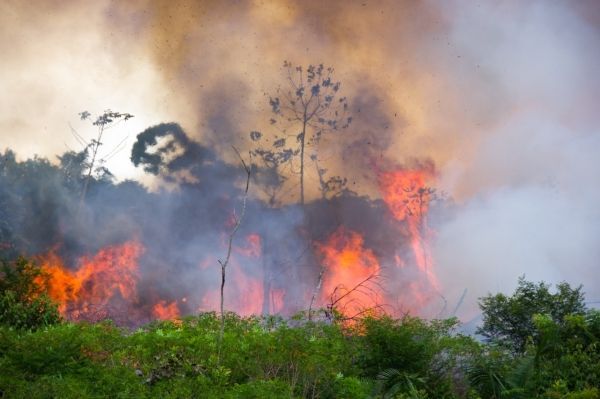You’ve seen it all over the news: Fires in the Amazon and throughout South America have been raging for weeks, sparking dire predictions about climate change, criticism of the Brazilian government over increased deforestation, and a viral moment of social media grief coalescing around the hashtag #PrayforAmazonia. These are far from the first fires in the region, but they’re occurring with record frequency. Brazil’s National Institute for Space Research reported in mid-September that the some 100,000 wildfires in the country so far in 2019 mark a 45 percent increase over the same time period last year. Similar fires in Indonesia, many of which were deliberately set to make room for palm plantations, have also raised concerns.
This development has global consequences. For example, the Amazon forests contain 10 to 20 percent of the carbon in all of earth’s ecosystems. Having those stores rise to the atmosphere in the form CO2 could dangerously accelerate global warming, scientists have concluded.
Many news accounts have offered scientific perspectives that put the burning Amazon—and its impact on climate change—in context, but, given the scale and complexity of the issue, it can be hard to know which interpretations to trust. NYU News spoke with Matthew Hayek, an assistant professor in the Department of Environmental Studies, about the most reliable methods for assessing the scale and significance of the fires.
Continue reading at New York University
Image via Getty Images


